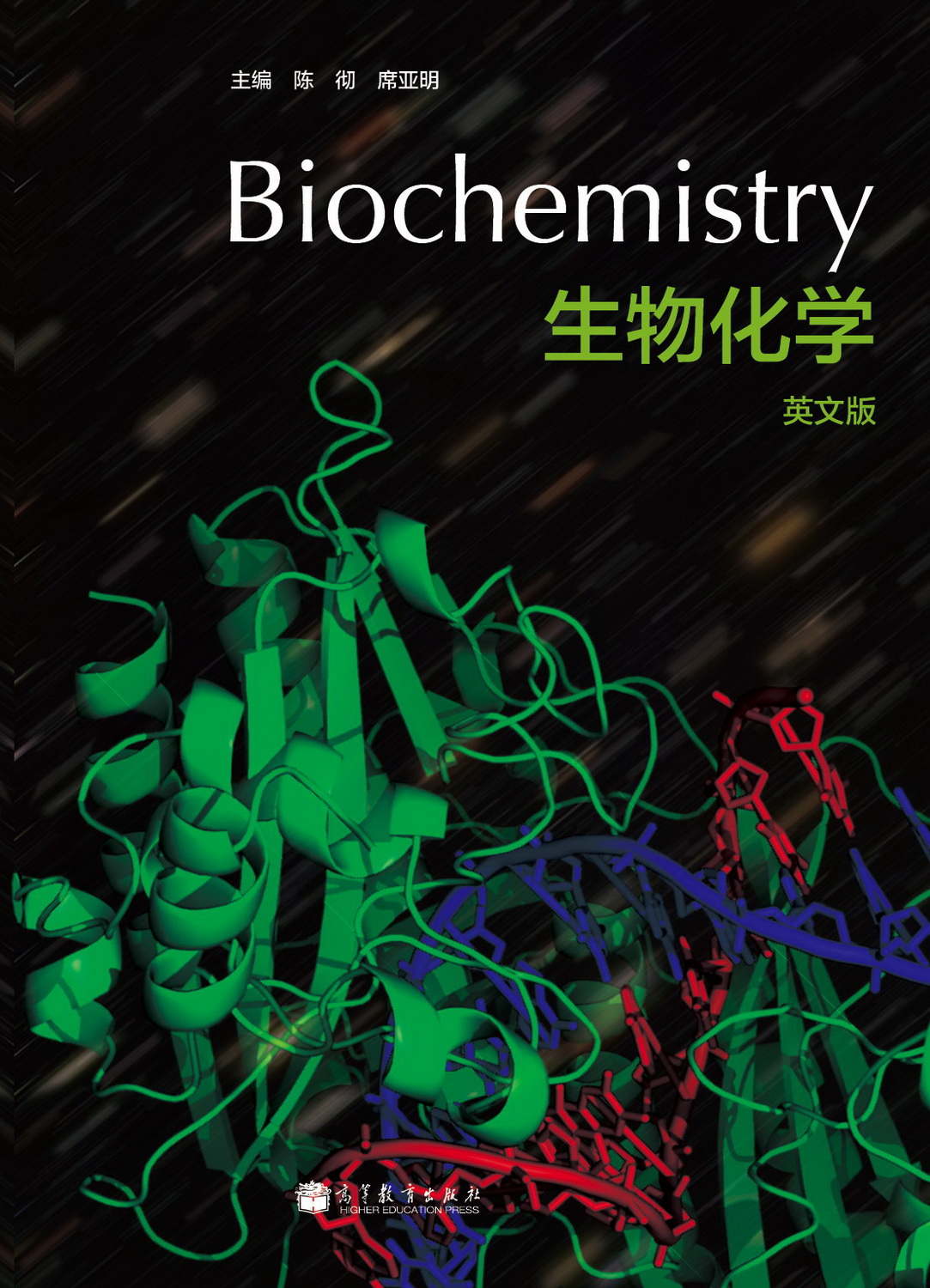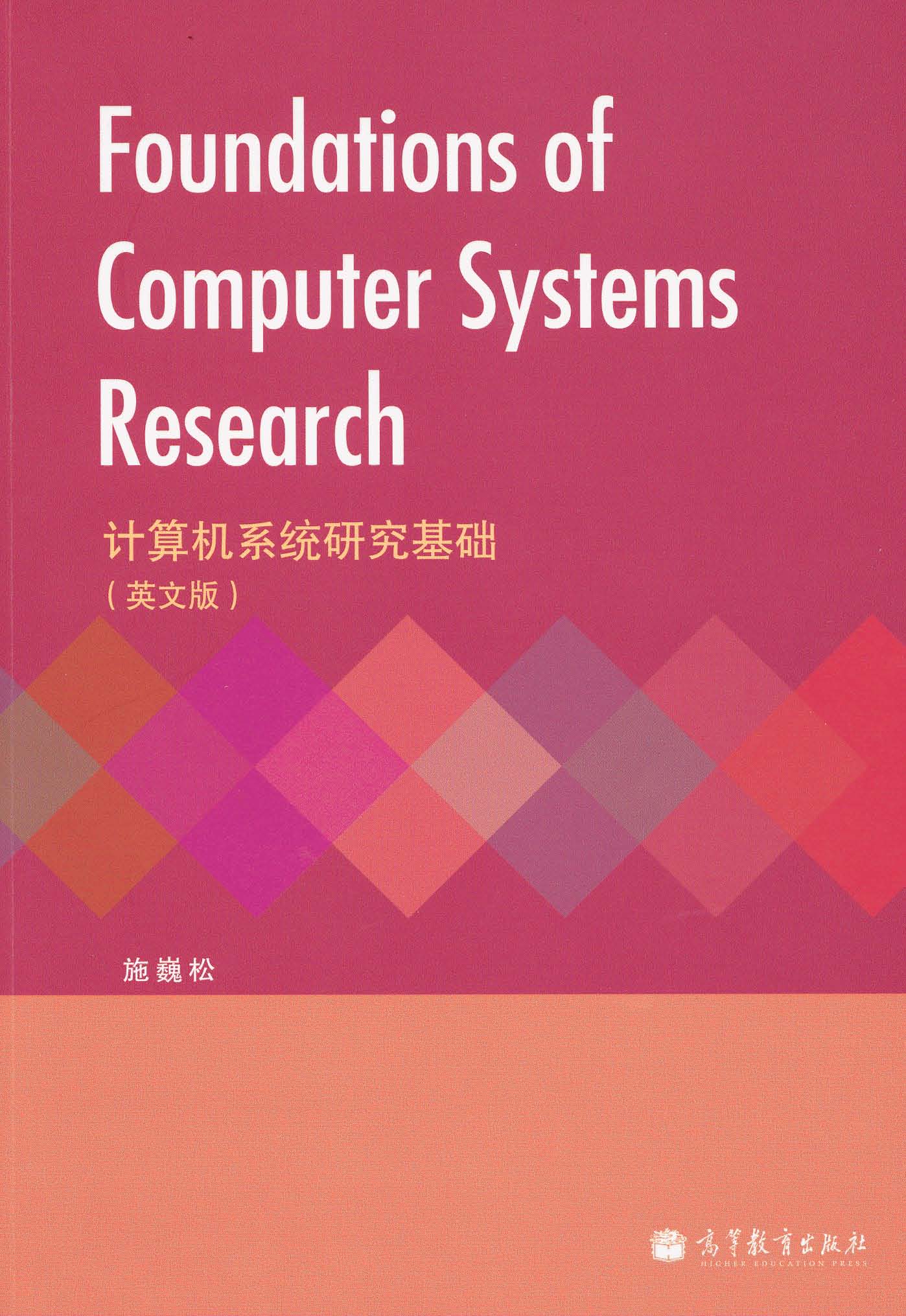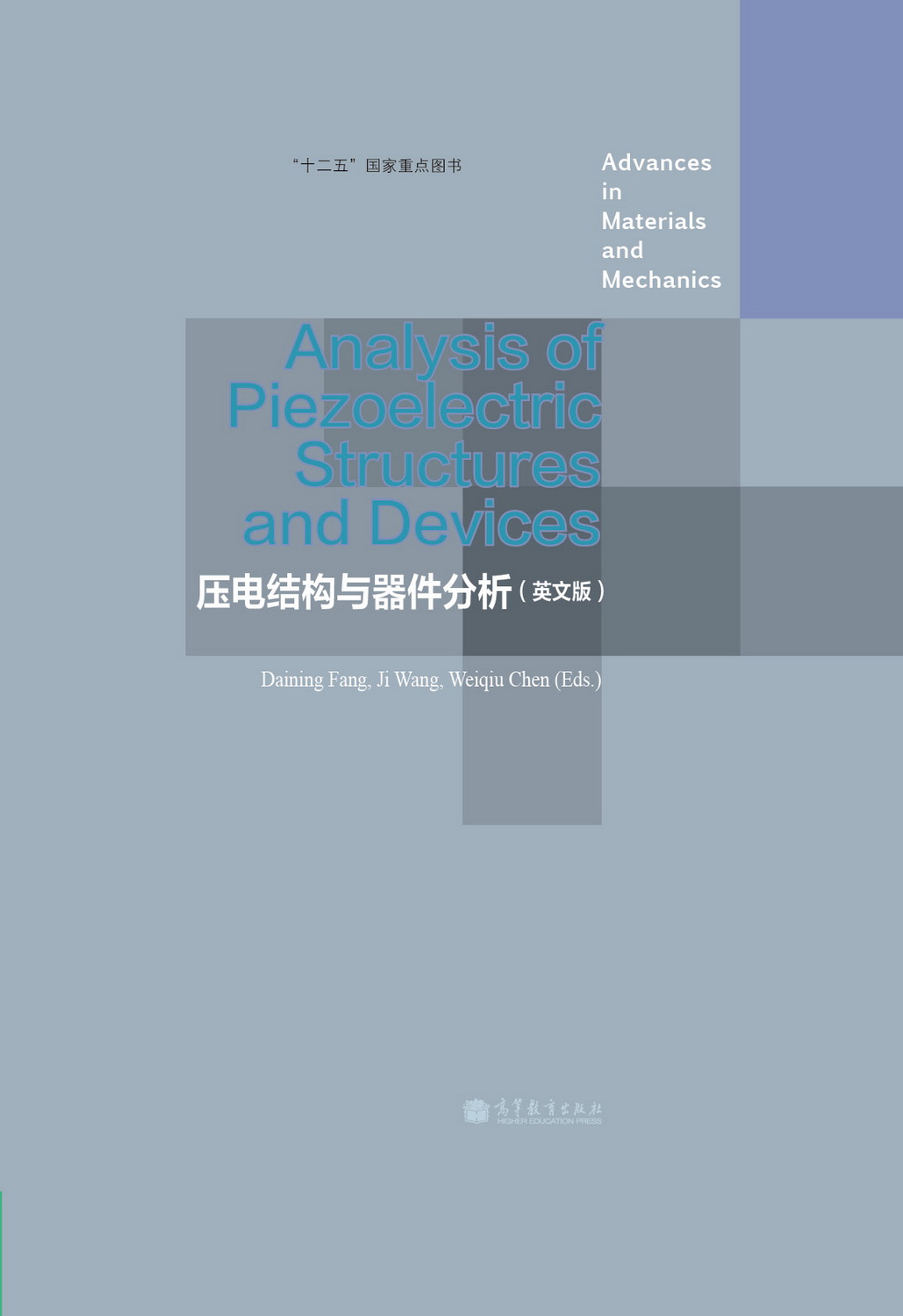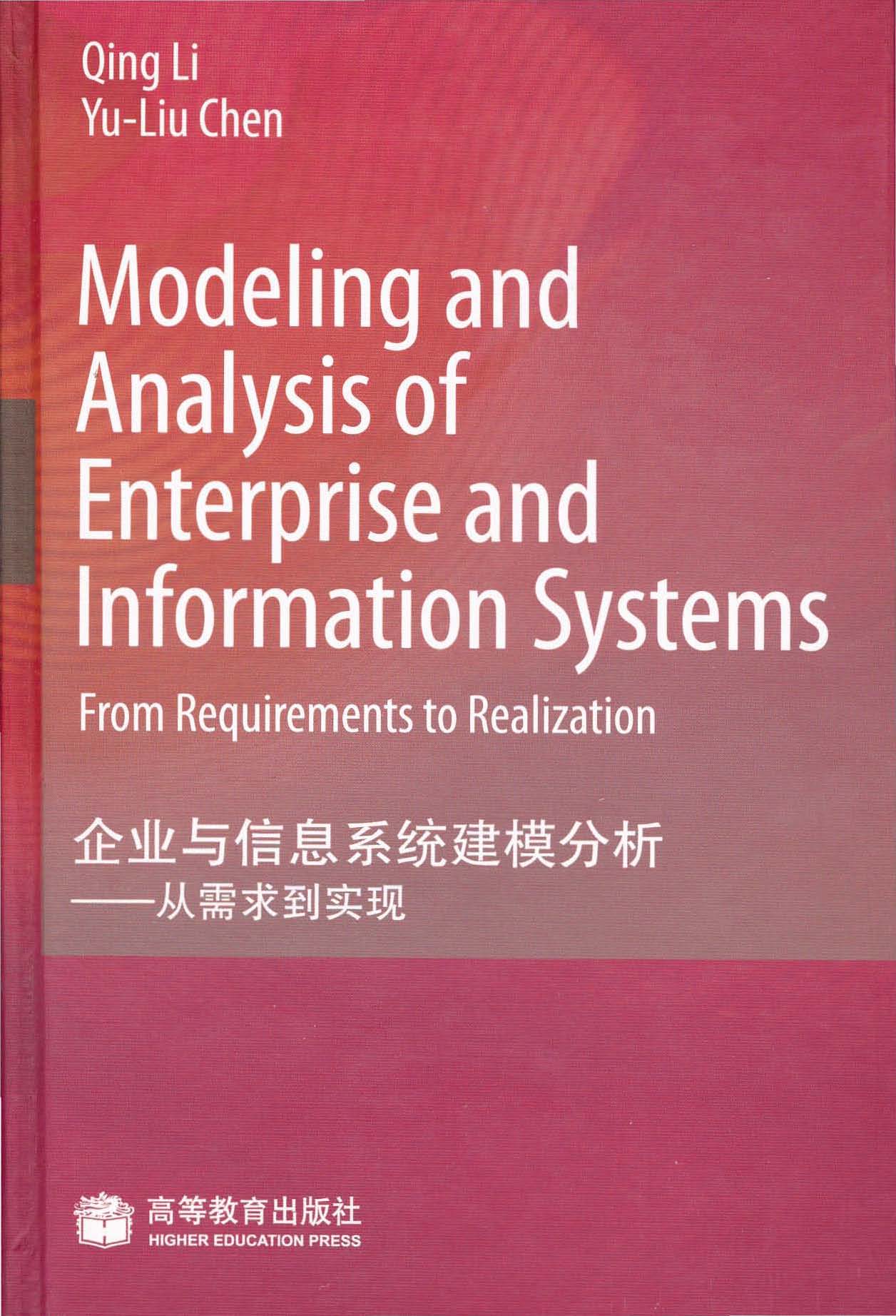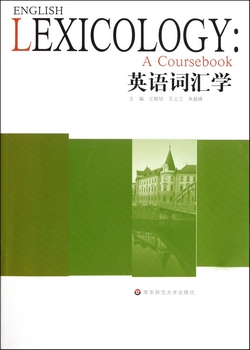生物化学(英文版)
作者: 陈彻 席亚明
出版时间:2013-01-29
出版社:高等教育出版社
- 高等教育出版社
- 9787040365283
- 1
- 242122
- 平装
- 16开
- 2013-01-29
- 600
- 331
《生物化学(英文版)》在组织结构上,层次分明,重点突出;语言简明易懂;在内容上也结合多年教学经验,深入浅出,便于读者理解。同时也兼顾了临床医学及其他相关专业的需求。本书围绕生物化学课程目标所需的知识构建,并适当引入本学科最新进展。全书共分16章,内容涵盖了蛋白质、酶、核酸等的结构和功能;DNA、RNA、蛋白质的合成;糖类、脂质、氨基酸、核酸的代谢;以及细胞信号、光合磷酸化等。
本书可用作临床医学、口腔、公共卫生、医学检验、药学等专业双语教学用书,也可作为拟提高医学专业英文水平读者的工具书。
Introduction
Chapter 1 Overview of Cell
1.1 Structural Organization of Prokaryotic Cells
1.2 Structural Organization of Eukaryotic Cells
Membrane
Cytoskeleton
The Nucleus
The Endoplasmic Reticulum and Golgi Apparatus
Mitochondria
Lysosomes and Peroxisomes
Key Words
Chapter 2 Protein
2.1 Amino Acids
General Structures of Amino Acids
Structures of the 20 Common Amino Acids
Spectroscopic Properties of Amino Acids
The Ninhydrin Reaction
Ionization of Amino Acids
2.2 Structures of Proteins
Peptide
Peptide Bonds
Primary Structure
Secondary Structure
Supersecondary Structure
Tertiary Structure
Quaternary Structure
The Classification of Proteins
2.3 Structure-function Relationships of Proteins
Primary Structure Determine the Conformation of Protein
Protein Denaturation and Renaturation
Protein Stability
Correlation between Conformation and Function of Protein
Protein Misfolding and Diseases
2.4 Protein Purification Techniques
vi Contents
Salting Out
Dialysis
Gel Filtration Chromatography
Ion Exchange Chromatography
Affinity Chromatography
Electrophoresis
SDS Polyacrylamide Gel Electrophoresis ( SDS-PAGE )
Isoelectric Focusing
Two Dimensional Electrophoresis
Ultracentrifugation
Key Words
Chapter 3 Enzymes
3.1 The History of Enzymes
3.2 Naming and Classification of Enzymes
EC 1 Oxidoreductases
EC 2 Transferases
EC 3 Hydrolases
EC 4 Lyases
EC 5 Isomerases
EC 6 Ligases
3.3 Structural Components of Enzymes
Apoenzymes , Cofactors and Holoenzymes
Active Center of Enzymes
Isozymes
3.4 The Properties of Enzymatic Catalysis
Enzymes Greatly Accelerate the Rates of Chemical Reactions
Specificity of Enzymes
Controllability of Enzyme Activity
3.5 Mechanism of Enzymatic Catalysis
Transition State and Activation Energy
Lock and Key Hypothesis
Induced Fit Hypothesis
Enzyme-Substrate Interactions
3.6 Enzyme Kinetics
Substrate Concentration Affects the Rate of Reactions
Michaelis-Menton Kinetics
The Significance of Km
Measurement of Km and Vmax
Enzyme Concentration Affects the Rate of Reactions
Temperature Affects the Rate of Reactions
pH Value Affects the Rate of Reactions
Inhibition of Enzyme Catalyzed Reactions
Contents vii
3.7 Enzyme Inhibitors and Drugs
3.8 Regulation of Enzyme Activity
Allosteric Regulation
Covalent Modification
Zymogen Activation
3.9 Enzymes in the Diagnosis of Pathology
Key Words
Chapter 4 Coenzymes and Vitamins
4.1 Water -soluble Vitamins
Vitamin B1
Vitamin PP
Vitamin B2
Pantothenic Acid
Vitamin B6
Vitamin B12
Vitamin C
Biotin
Lipoic Acid
Folate
4.2 Fat -soluble Vitamins
Vitamin A
Vitamin D
Vitamin E
Vitamin K
Key Words
Chapter 5 Nucleic Acids
5.1 Building Blocks of Nucleic Acids
Ribose and Deoxyribose
Nitrogenous Bases
Nucleosides
Nucleotides
5.2 Nucleic Acid Structure
3′-5′Phosphodiester Bonds
The Primary Structure of Nucleic Acids
DNA Double Helix
DNA Organization in Cells
Structure of RNA
Ribozymes
5.3 Physicochemical Property of Nucleic Acids
Spectroscopic Properties of Nucleic Acids
Denaturation and Renaturation of DNA
viii Contents
Nucleic Acid Hybridization
Key Words
Chapter 6 DNA Replication
6.1 Fundamental Rules in DNA Replication
Semiconservative
Bidirectional Replication of DNA
Semidiscontinuous and Okazaki Fragments
6.2 The Key Enzymes and Protein Factors in DNA Replication of li 1
DNA Polymerase
Model of the Replisome
6.3 DNA Replication in the li
Initiation
Elongation
Termination
6.4 DNA Replication in Eukaryote
Eukaryotic Cell Cycle
Multiple Replicons
Eukaryotic DNA Polymerases
Other Enzymes and Proteins in DNA Replication of Eukaryote
Replication of the Ends of Chromosomes
6.5 Repair of Damaged DNA
Nucleotide Excision Repair
Transcription-coupled Repair
Base Excision Repair
Mismatch Repair
Direct Repair
SOS Response Repair
Key Words
Chapter 7 RNA Synthesis—Transcription
7.1 DNA-dependent Synthesis of RNA
DNA -dependent RNA Polymerase
Promoter Sites on the DNA Template
7.2 Transcription in Prokaryote
Initiation
Elongation
Termination
7.3 Transcription in Eukaryotes
Eukaryotic RNA Polymerases
Eukaryotic Transcription Factors
7.4 RNA Processing
Eukaryotic mRNA Processing
Contents ix
The Splicing of mRNA Precursors
Processing of pre-rRNA and pre -tRNA
RNA Editing
Key Words
Chapter 8 Protein Synthesis—Translation
8.1 The Genetic Code
The Genetic Code Is a Triplet Code
The Genetic Code Is Nonoverlapping and without Punctuation
The Genetic Code Is Degenerate, but Unambiguous
The Code Is Almost Universal
8.2 Formation of Aminoacyl -tRNA
8.3 Translation in Prokaryotes
Initiation of Translation
Elongation
Termination and Release
Polyribosomes
8.4 Translation in Eukaryotes
8.5 Events Following Protein Translation
Processing of Proteins
Posttranslational Modifications
8.6 Protein Targeting
Signal Hypothesis
Lysosomal Proteins
Mitochondrial Proteins
Nuclear Proteins
Proteins of the Endoplasmic Reticulum
Integral Plasma Membrane Proteins
8.7 Inhibitors of Protein Synthesis
Key Words
Chapter 9 Regulation of Gene Expression
9.1 Principles of Gene Regulation
Specificity of Gene Expression
Types of Gene Expression
The Specific DNA Sequences
Regulatory Proteins
9.2 Regulation of Gene Expression in Prokaryotes
Operons
Lactose ( lac ) Operon
Negative Regulation of Gene Transcription
Positive Regulation of Gene Transcription
Tryptophan ( trp) Operon
x Contents
Attenuation of Transcription
9.3 Regulation of Gene Expression in Eukaryotes
Modification of DNA
Gene Regulatory Sequences
Gene Specific Regulatory Proteins
Key Words
Chapter 10 Carbohydrate Metabolism
10.1 Glycolysis
The Reactions of Glycolysis
The Fate of Pyruvate
Regulation of Glycolysis
10.2 The Citric Acid Cycle
The Formation of Acetyl Coenzyme A from Pyruvate
The Reactions of the Citric Acid Cycle
Energy Yield of the Citric Acid Cycle
The Regulation of Citric Acid Cycle
Major Metabolic Pathways Converging on the Citric Acid Cycl e
10.3 The Pentose Phosphate Pathway
The Reaction of the Pentose Phosphate Pathway
The Regulation of the Pentose Phosphate Pathway
Metabolic Disorders Associated with the Pathway
10.4 Glycogen Metabolism
Glycogen Synthesis
Glycogen Degradation
Regulation of Glycogen Metabolism
10.5 Gluconeogenesis
Gluconeogenic Pathway
The Cori Cycle
10.6 Regulation of Blood Glucose Level
Key Words
Chapter 11 Electron Transport and Oxidative Phosphorylation
11.1 Electron Transport Chains
Complex Ⅰ:NADH to Coenzyme Q
Complex Ⅱ:Succinate to Coenzyme Q
Complex Ⅲ:Coenzyme Q to Cytochrome c
Complex Ⅳ:Cytochrome c to O2
11.2 Coupling with Oxidative Phosphorylation
Chemiosmotic Coupling
P/O Ratio
ATP Synthase or the F oF1 Complex
11.3 Aerobic Oxidation of Cytosolic NADH
Contents xi
Glycerol -3-phosphate Shuttle
Malate-Aspartate Shuttle
11.4 Effect Factors of Oxidative Phosphorylation
Inhibitors of Electron Transport
Uncouplers
11.5 Mutations in Mitochondrial DNA ( mtDNA)
Key Words
Chapter 12 Lipid Metabolism
12.1 The Digestion and Absorption of Lipids
12.2 Oxidation of Fatty Acids
Mobilization of Fatty Acids
Activation and Transport of Fatty Acids
The Reaction of β-Oxidation
Energy Yield of Fatty Acid Oxidation
Alternative Oxidation Pathways
12.3 Synthesis and Oxidation of Ketone Bodies
Synthesis of Ketone Bodies
Oxidation of Ketone Bodies as Fuels
12.4 Fatty Acid Synthesis
Transport of Acetyl CoA to the Cytosol
Carboxylation of Acetyl CoA
The Reactions of Fatty Acid Synthesis
Elongation and Desaturation
Regulation of Fatty Acid Metabolism
12.5 Triglyceride Synthesis
12.6 Metabolism of Glycerophospholipids and Sphingolipids
Synthesis of Glycerophospholipids
Synthesis of Sphingolipids
Degradation of Glycerophospholipids and Sphingolipids
12.7 Cholesterol Metabolism
Biosynthesis of Cholesterol
Regulation of Cholesterol Biosynthesis
The Transform of Cholesterol
12.8 Lipoprotein Metabolism
Chylomicrons
VLDLs, IDLs and LDLs
HDLs
Key Words
Chapter 13 Amino Acid Metabolism
13.1 General Metabolism of Amino Acids
Transamination Reactions
xii Contents
Oxidative Deamination of Glutamate
Purine Nucleotide Cycle
Transportation of Amino Acid Nitrogen to the Liver
The Urea Cycle
Links between the Citric Acid and Urea Cycles
Regulation of the Urea Cycle
Metabolism of Carbon Skeletons of Amino Acids
13.2 Individual Metabolism of Some Amino Acids
Decarboxylation of Amino Acids
One Carbon Unit
S -Adenosyl Methionine
Synthesis of the Catecholamines
Key Words
Chapter 14 Nucleotides Metabolism
14.1 Nucleotide Synthesis
The de novo Pathway of Purine Synthesis
Synthesis of AMP and GMP
Phosphorylation of AMP and GMP
Regulation of Purine Synthesis
Purine Salvage Pathways
Purine Nucleotides Transformation
The de novo Pathway of Pyrimidine Synthesis
Regulation of de novo Pyrimidine Synthesis
The Salvage Pathway of Pyrimidine Synthesis
The Production of Deoxyribonucleotides
14.2 Degradation of Nucleotides
Degradation of Purine Nucleotides
Degradation of Pyrimidine Nucleotides
Key Words
Chapter 15 Cell Signaling
15.1 Signaling Molecules
Types of Signaling Molecules
15.2 Signaling Receptor
Properties of Binding between Receptors and Ligands
Cell Surface Receptors
Intracellular Receptors
15.3 Principles of Intracellular Signal Transduction
Second Messengers
Protein Kinases and Phosphatases
Protein Interaction Domains
Adaptor Protein
Contents xiii
Scaffolding Proteins
15.4 Several Classic Examples of Signal Transductions
MAPK /ERK Pathway
JAK -STAT Pathway
TGF-βSignaling Pathway
Insulin Signaling Pathways
Glucagon and Epinephrine Signaling Pathways
Key Words
Chapter 16 The Popular Techniques in Molecular Biology
16.1 Molecular Hybridization and Blotting Technique
The Principle of Molecular Hybridization and Blotting Technique
The Types and Applications of Blotting Technique
16.2 The Principle and Application of Polymerase Chain Reaction ( PCR) 2
The Principle of PCR
The Application of PCR
16.3 Nucleic Acid Sequencing
RNA Sequencing
DNA Sequencing
The Application of DNA Sequencing
16.4 Gene Library
Genomic DNA Library
cDNA Library
The Application of cDNA Library
cDNA Library vs .Genomic DNA Library
16.5 Biological Chip Techniques
Gene Chip
Protein Chip
16.6 The Method of Protein-Protein and Protein -DNA Interaction Study 3
Protein-Protein Interaction Technology
DNA -Protein Interaction Molecular Analysis Technology
16.7 The Establishment and Application of Heredity -Modified Animal
Model
Transgenic Technology
Nuclear Transfer Technology
Gene Targeting
Gene Knockout
Gene Knockin
Gene Knockdown
16.8 Cloning and Identification of Disease Relative Genes
Functional Cloning
Positional Cloning
xiv Contents
16.9 Gene Therapy
Approach of Gene Therapy
Types of Gene Therapy
Vectors in Gene Therapy
Key Words
Reference
Index

